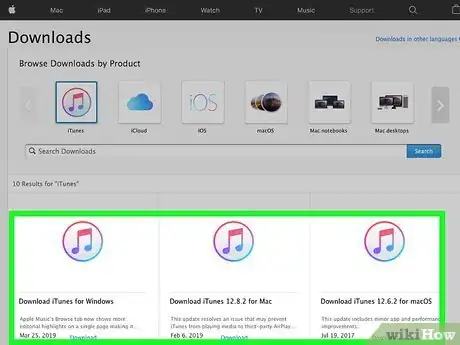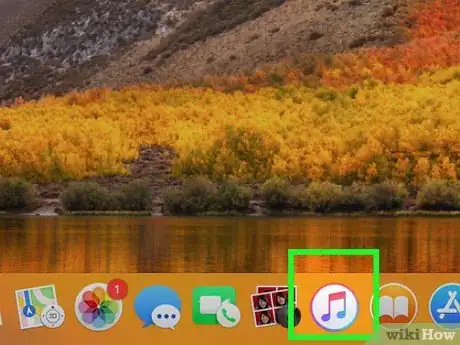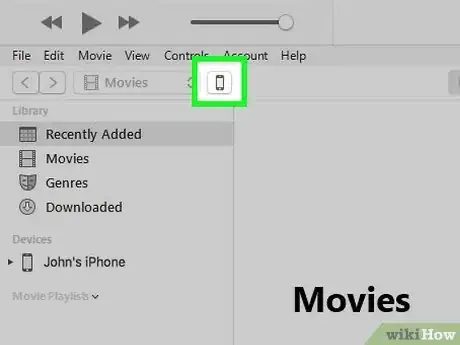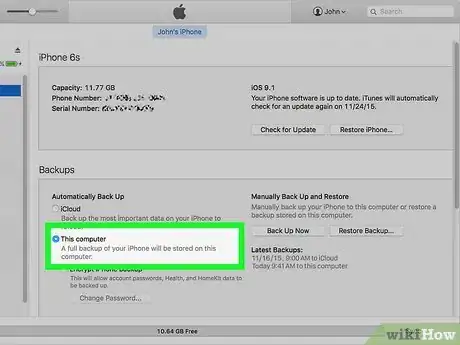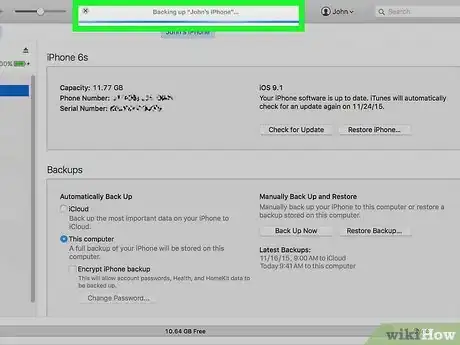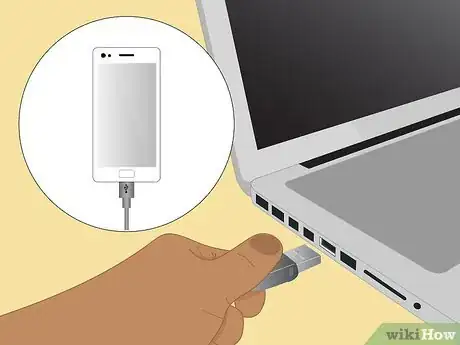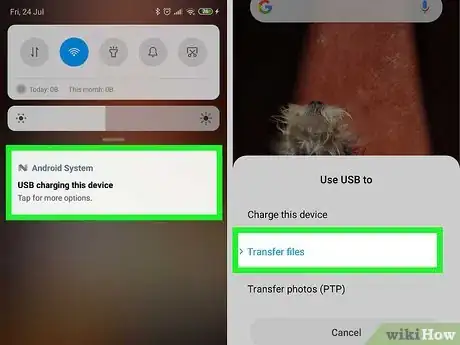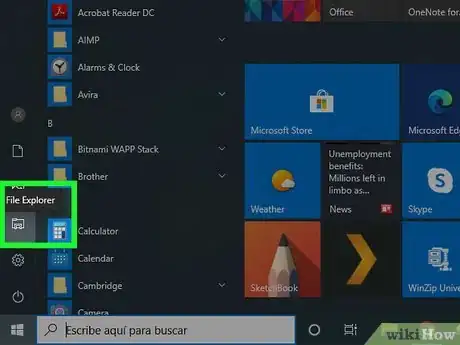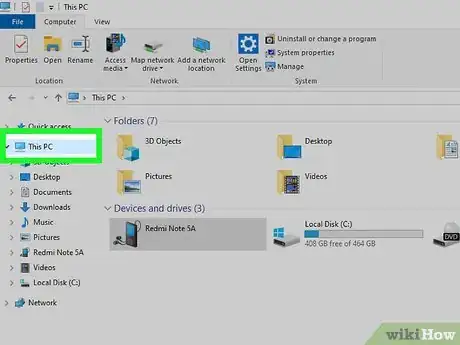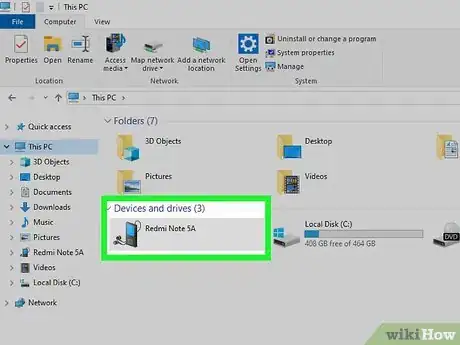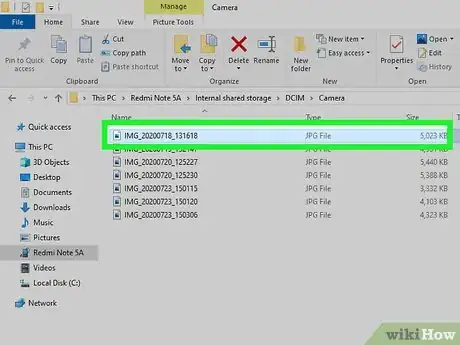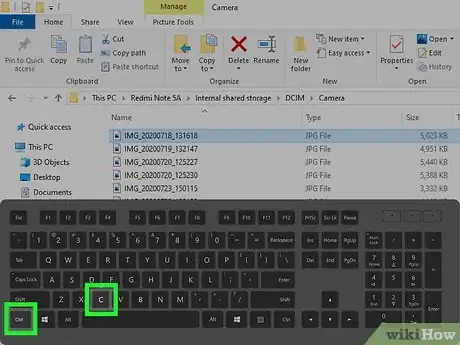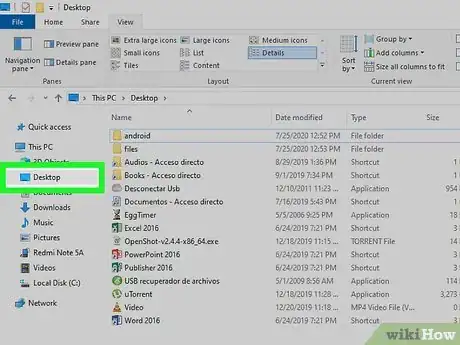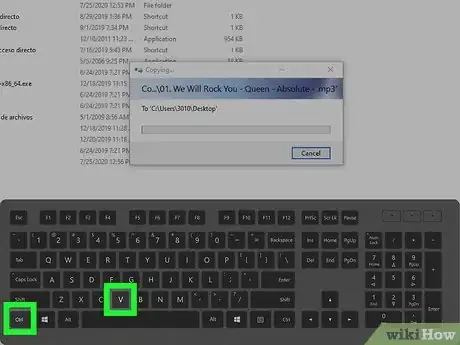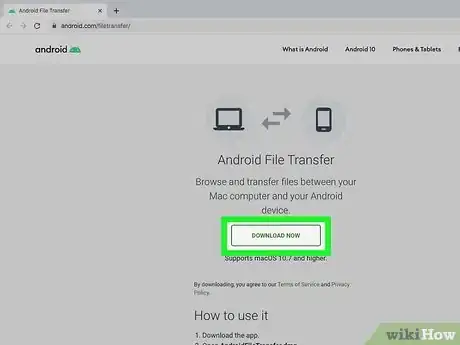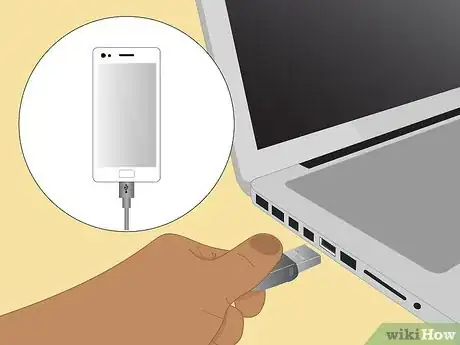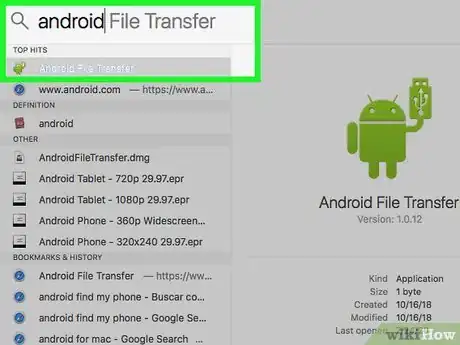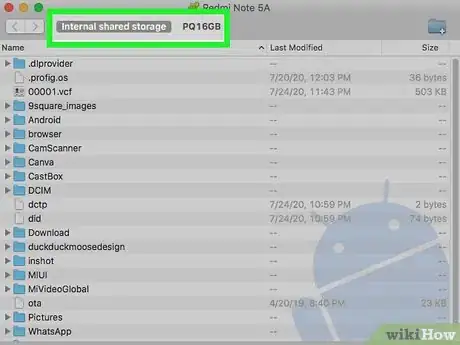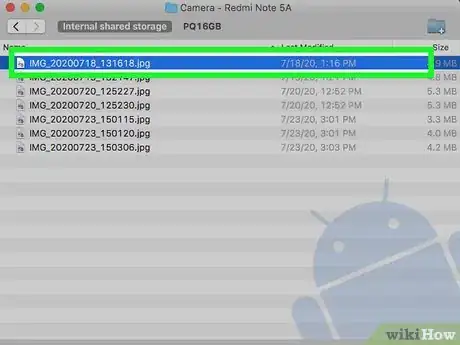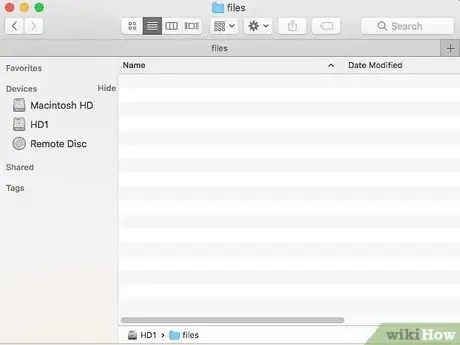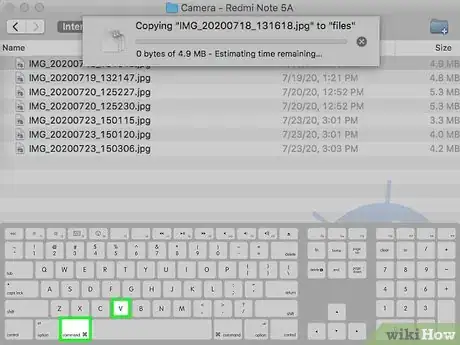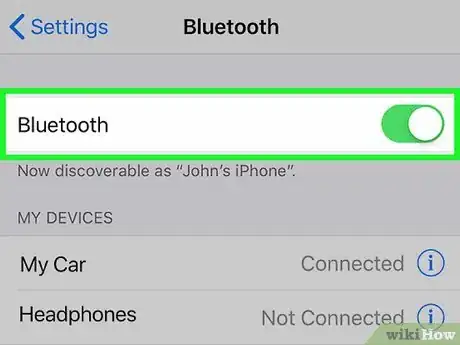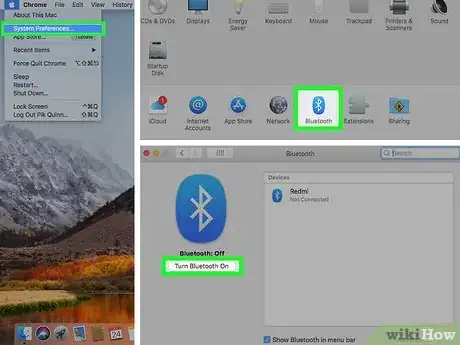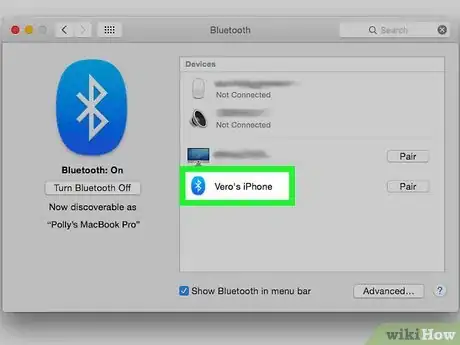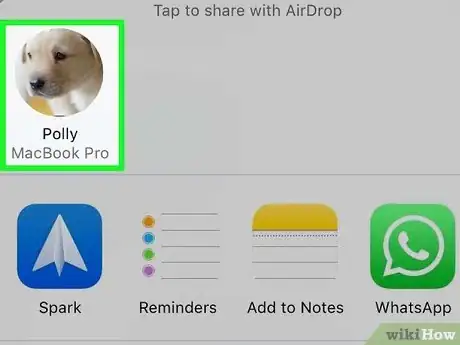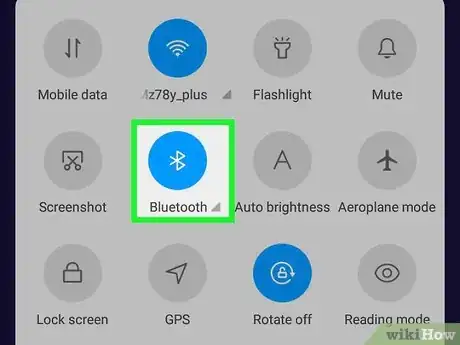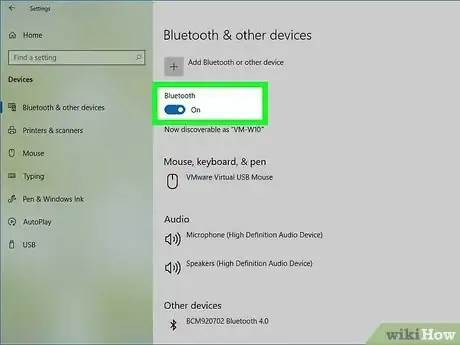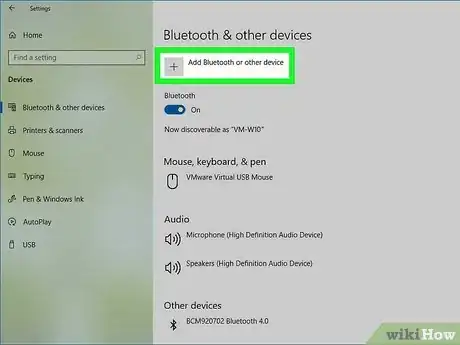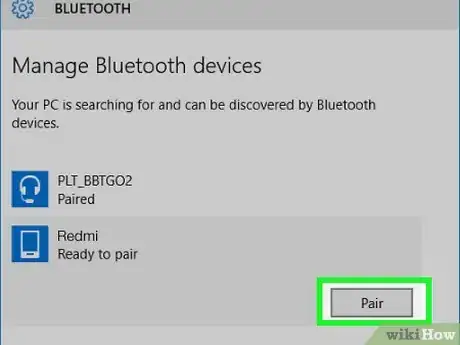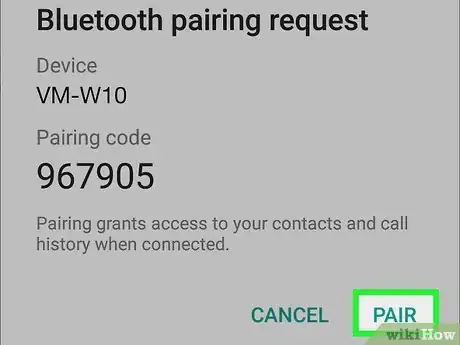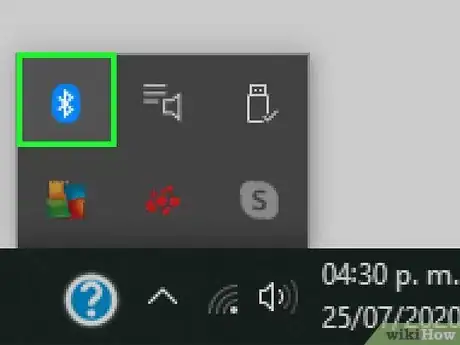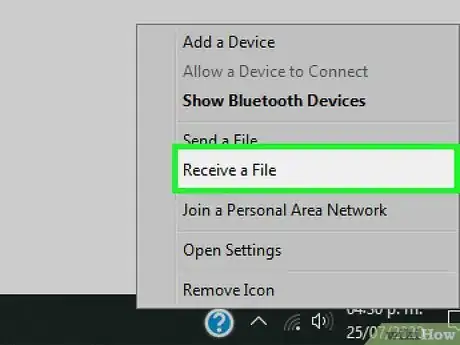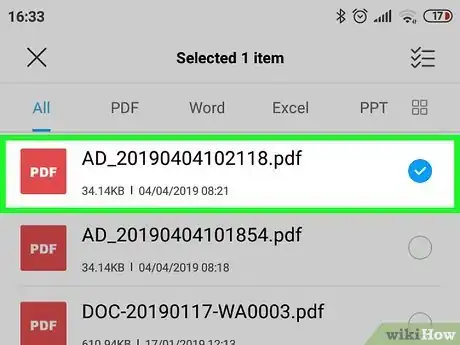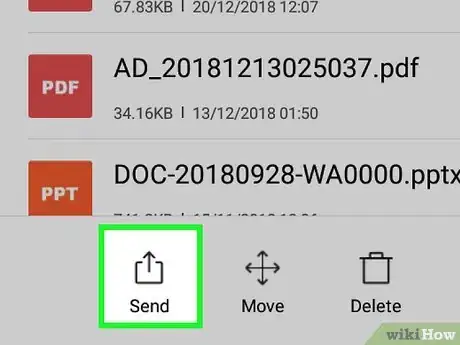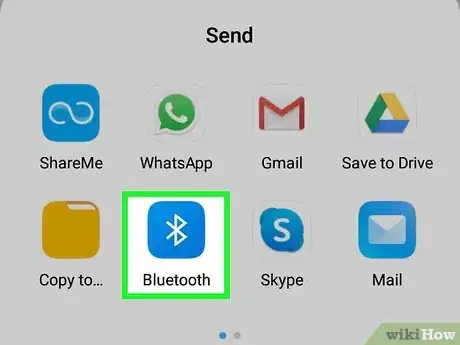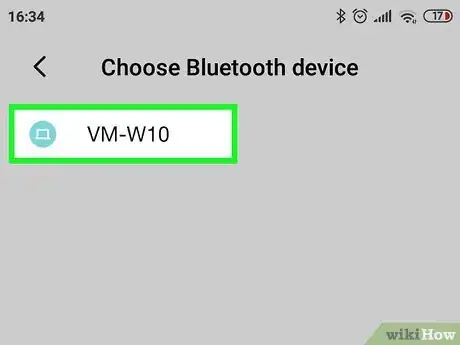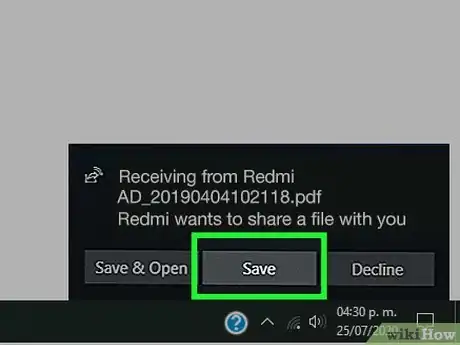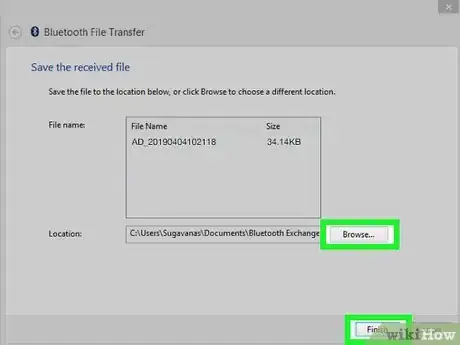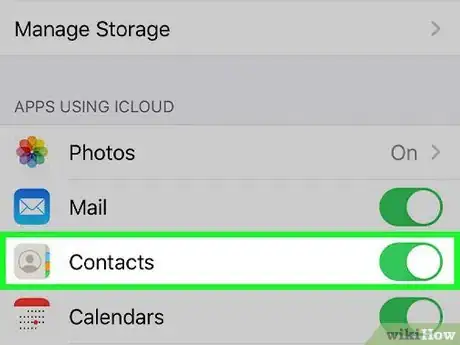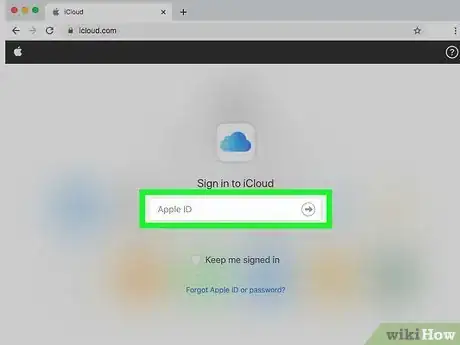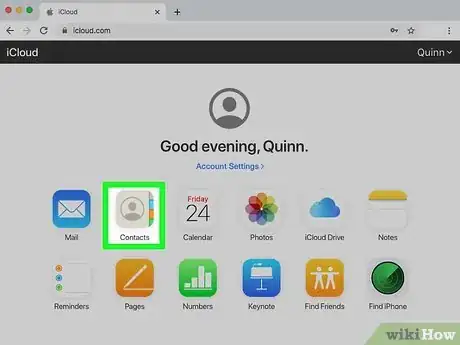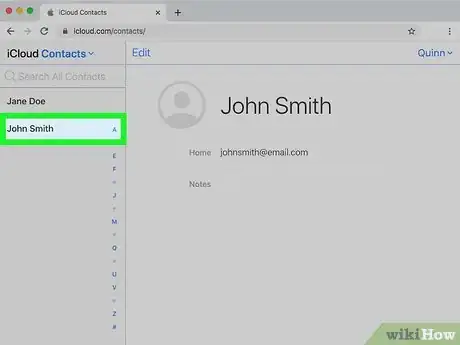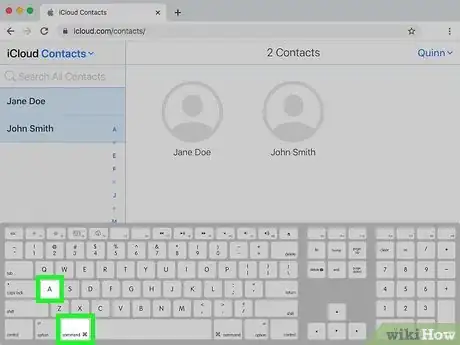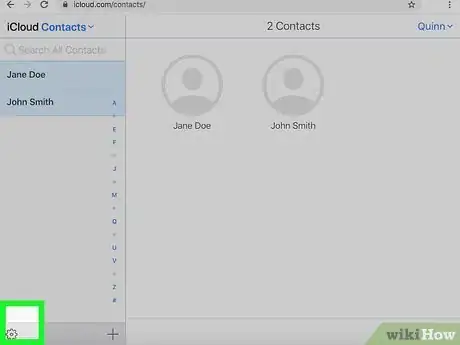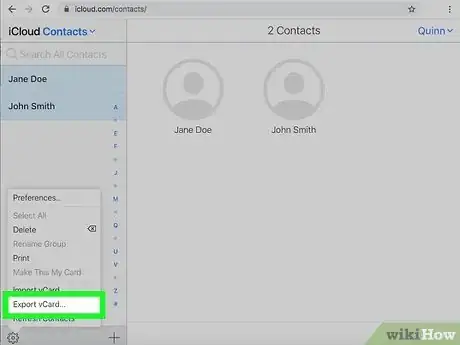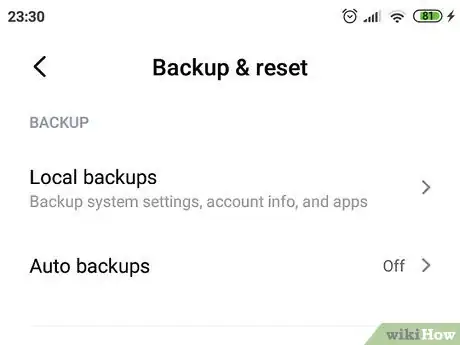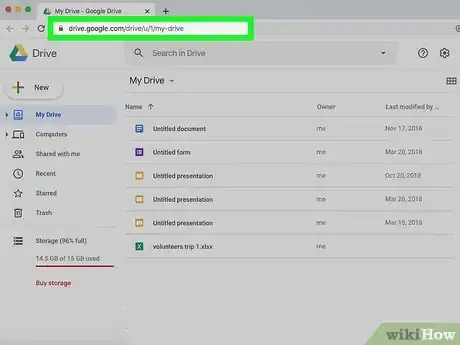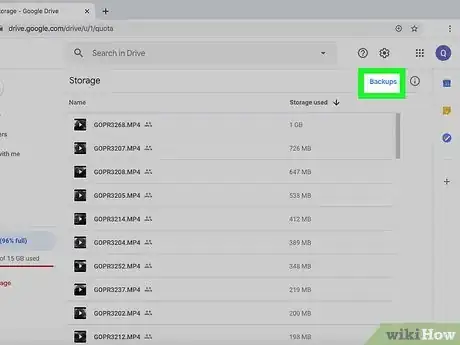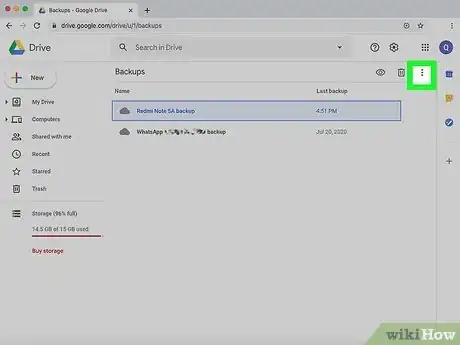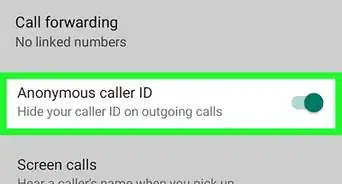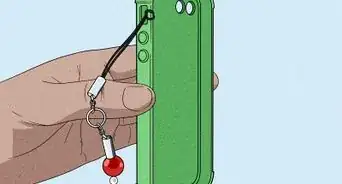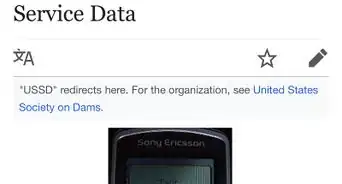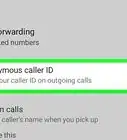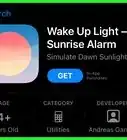This article was co-authored by wikiHow staff writer, Jack Lloyd. Jack Lloyd is a Technology Writer and Editor for wikiHow. He has over two years of experience writing and editing technology-related articles. He is technology enthusiast and an English teacher.
The wikiHow Tech Team also followed the article's instructions and verified that they work.
This article has been viewed 2,150,397 times.
Learn more...
This wikiHow teaches you how to move files and information from your iPhone or Android phone onto your Windows or Mac computer. Data that you can send from your phone to your computer might include photos, videos, notes, contact lists, and so on. You can use a USB cable to transfer most files and information for both iPhones and Androids, or you can use Bluetooth to transfer iPhone files to a Mac or Android files to a Windows computer.
Steps
Using a USB Cable for iPhone
-
1Make sure that you have iTunes. You can easily back up all of your iPhone's data to your computer through the free iTunes program.
- If you don't have iTunes on your computer, download and install it before proceeding.
-
2Attach your iPhone to your computer. Plug the USB end of the iPhone's charger cable into one of your computer's USB slots, then plug the other end of the charger into your iPhone.Advertisement
-
3Open iTunes. It's a multicolored musical note icon on a white background.
-
4Click the iPhone icon. This iPhone-shaped icon is in the upper-left side of the window.
-
5Check the "This Computer" box. It's in the "Backups" section of your iPhone's page. Doing so ensures that your phone's data will be backed up to your computer, not iCloud.
-
6Click Back Up Now. This grey button is on the right side of the "Backups" section. Your iPhone will begin backing up to your computer.
- You can view the progress of the backup by watching the progress bar at the top of the iTunes window.
-
7Wait for the backup to finish. Once your backup completes, a chime will charm, and you will be able to disconnect your iPhone from your computer.
Using a USB Cable for Android on Windows
-
1Attach your Android to your computer. Plug the USB end of your Android charger cable into one of your computer's USB ports, then plug the charger end into your Android.
-
2Tap the "USB" notification on your Android. When prompted, confirm that you want to use the USB connection to transfer files by tapping the pertinent notification on your Android. At this point, you can switch over to your computer.
-
3
-
4
-
5Click This PC. It's on the left side of the File Explorer, though you may have to scroll up or down the left-hand pane to see it.
-
6Double-click your Android. In the "Devices and drives" section of the This PC folder, double-click your Android's name. This will open the Android's folder.
-
7Find a file that you want to transfer. Most Androids require you to open a storage folder (e.g., "Internal") before you can view other information that's stored on the Android, but you may have to open additional folders as well.
- For Androids with removable storage, you'll usually find the bulk of your files in the "SD" or "Removable" folder rather than the "Internal" folder.
-
8Select the file or folder. Click the file or folder that you want to move onto your computer. If you want to select multiple individual files, hold down Ctrl while clicking each one.
-
9Copy the file or folder. Press Ctrl+C to copy your selected file(s) or folder(s).
-
10Go to the place where you want to save the copied item(s). In the File Explorer's left-hand sidebar, click a folder on your computer (e.g., "Documents") in which you want to place the copied item(s).
-
11Paste the file or folder. Press Ctrl+V to do so. The copied item(s) will appear in the selected folder, though it may take a while for the files to finish copying depending on their overall size.
- You can also perform this process in the reverse by copying a file or folder from your computer and then pasting it into a folder in your Android's internal storage.
Using a USB Cable for Android on Mac
-
1Download and install the Android File Transfer program. This program is free to download and use, and it's necessary if you want to browse your Android's files from your Mac. To download Android File Transfer:[1]
- Go to https://www.android.com/filetransfer/
- Click DOWNLOAD NOW
- Double-click the Android File Transfer DMG file.
- Verify the software if prompted.
- Click and drag the Android File Transfer icon onto the Applications folder.
-
2Attach your Android to your computer. Plug the USB end of your Android charger cable into one of your computer's USB ports, then plug the charger end into your Android.
- If your Mac uses USB-C ports instead of USB 3.0 ports, you'll need a USB 3.0 to USB-C adapter in order to plug in your Android.
-
3Tap the "USB" notification on your Android. When prompted, confirm that you want to use the USB connection to transfer files by tapping the pertinent notification on your Android. At this point, you can switch over to your computer.
-
4
-
5Find a file that you want to transfer. Most Androids require you to open a storage folder (e.g., "Internal") before you can view other information that's stored on the Android, but you may have to open additional folders as well.
- For Androids with removable storage, you'll usually find the bulk of your files in the "SD" or "Removable" folder rather than the "Internal" folder.
-
6Select the file or folder. Click the file or folder that you want to move onto your computer. If you want to select multiple individual files, hold down ⌘ Command while clicking each one.
-
7Copy the file or folder. Press ⌘ Command+C to copy your selected file(s) or folder(s).
-
8Go to the place where you want to save the copied item(s). In the Finder's left-hand side, click a folder on your computer (e.g., "Desktop") in which you want to place the copied item(s).
-
9Paste the file or folder. Press ⌘ Command+V to do so. The copied item(s) will appear in the selected folder, though it may take a while for the files to finish copying depending on their overall size.
- You can also perform this process in the reverse by copying a file or folder from your computer and then pasting it into a folder in your Android's internal storage.
Using Bluetooth with iPhone on Mac
-
1
-
2
-
3Look for your iPhone's name. You should see it appear in the "Devices" section of the Bluetooth window after a moment.
-
4Click Pair. It should be to the right of your iPhone's name. Doing so will prompt your Mac and your iPhone to connect to one another.
-
5Open a file that you want to share. On your iPhone, open a photo, video, or note that you want to add to your Mac.
-
6
-
7Tap your Mac's name. It should be at the top of the menu. Doing so will transfer the file to your Mac's "AirDrop" folder, which you can find by opening the Finder and looking at the left-hand sidebar there.
- You may have to wait for a few seconds before the Mac's name appears.
- You can place files from your Mac on your iPhone by opening the AirDrop folder, waiting for your iPhone's name to appear, and then clicking and dragging a file onto your iPhone's name.
Using Bluetooth with Android on Windows
-
1Turn on your Android's Bluetooth. Swipe down from the top of the screen, long-press the Bluetooth icon, and tap the white switch to the right of the "Bluetooth" heading. The switch will change color which signifies that your Bluetooth is now active.
- If this switch is blue or green, your Android's Bluetooth is already active.
- On a Samsung Galaxy, the switch is to the right of an "OFF" heading, and it will turn blue or green when tapped.
-
2Turn on your Windows computer's Bluetooth. Open Start , open Settings , click Devices, click the Bluetooth & other devices tab on the left side, and click the white "Off" switch below the "Bluetooth" heading. It will slide to the right.
- If this switch has "On" written next to it, your computer's Bluetooth is already enabled.
-
3Click Add Bluetooth or other device. This option is at the top of the page. A menu will appear.
-
4Click Bluetooth. It's in the menu. Doing so will prompt your computer to begin searching for your Android.
-
5Click your Android's name. It should appear in the menu.
- If you don't see your Android's name, look for your computer's name in the Android's Bluetooth menu and, if you see it, tap it. Your Android's name should appear in the Windows Bluetooth menu after doing so.
-
6Click Pair. It's below the Android's name in the menu.
-
7Click Yes on the code prompt. If the code displayed on your computer matches the code displayed on your Android, click Yes here. If not, click No, then try to pair the Android with your computer again.
-
8
-
9Click Receive a File. It's in the pop-up menu. Doing so will open a new window.
-
10Find a file that you want to share from your Android. This might be a photo or a video, for example.
- If you have a File Explorer app (e.g., ES File Explorer) installed on your Android, you can browse your Android's internal files (e.g., downloaded app APIs).
-
11Select the file. Tap and hold the file to do so. If it's a photo or video, you can instead tap it to open it.
-
12Tap the menu button. In most cases, this will be a ⋮ or a ⋯ icon, though some Samsung Galaxy phones will have a MORE icon. A drop-down menu should appear.
-
13Tap the "Share" option. This option will vary in appearance and name depending on your Android.
-
14Select the "Bluetooth" option. Again, this option's appearance will vary from Android to Android.
-
15Select your computer's name. Tap your computer in the menu that appears.
-
16Click the confirmation message on your computer. If prompted to accept or decline the file transfer on your computer, click Yes.
-
17Follow any on-screen prompts. Once you verify that you want to accept the file on your computer and you indicate a download location, the file should commence transferring to your computer.
- You can also send files to your Android by clicking Send a File in the Bluetooth pop-up menu, dragging files to transfer into the transfer window, following the on-screen prompts, and then tapping Accept (or similar) on your Android when prompted.
Downloading Contacts Data for iPhone
-
1Synchronize your Contacts data to iCloud. To do so:
- Open Settings
- Tap your Apple ID name card at the top of the page.
- Tap iCloud
- Tap the white switch next to "Contacts". If the switch is green, you don't have to tap it.
-
2Open the iCloud website. Go to https://www.icloud.com/ in your web browser. This will open your iCloud dashboard if you're logged in.
- If you aren't logged in, enter your Apple ID email address and password to log in.
-
3Click Contacts. It's a silhouette of a person. Doing so opens a list of your contacts.
-
4Click a contact. Select any contact in the middle column.
-
5Select all contacts. Press Ctrl+A (or ⌘ Command+A on Mac) to select all contacts.
-
6Click ⚙️. It's in the bottom-left side of the page. A pop-up menu will appear.
-
7Click Export vCard…. You'll see it in the pop-up menu. Your contacts' vCard file will download onto your computer.
Downloading Cloud Data for Android
-
1Back up your Android's data. Before you can download things like contact information, you need to back up your Android's data to Google Drive.
- Make sure you do this over an Internet connection rather than a cellular data connection.
-
2Open Google Drive. Go to https://drive.google.com/ in your browser. This will open your Google Drive account if you're logged in.
- If you aren't logged into your Google Drive account, enter your email address and password to proceed.
- This must be the account to which you backed up your Android. If it isn't, click your initial in the top-right side of the Drive page, click Sign out, and then sign back in with the correct account.
-
3Click the Backups tab. It's in the lower-left side of the Google Drive page.
-
4Select your backup. Click the backup file that you want to download onto your computer.
-
5Click ⋮. It's in the upper-right side of the page. A drop-down menu will appear.
-
6Click Download. You'll see this option in the drop-down menu. Doing so prompts your Android backup to download.
Community Q&A
-
QuestionCan my neighbor connect my phone to their laptop without my knowledge?
 Community AnswerIt depends on what type of phone you have. For example, if you have an iPhone, your neighbor might be able to connect to your phone, but you will be notified; a blue bar will appear at the top of your phone's screen.
Community AnswerIt depends on what type of phone you have. For example, if you have an iPhone, your neighbor might be able to connect to your phone, but you will be notified; a blue bar will appear at the top of your phone's screen. -
QuestionIs there a free app for data transferring?
 Community AnswerPlug the charger into your phone, and the other end into the USB port on your computer.
Community AnswerPlug the charger into your phone, and the other end into the USB port on your computer. -
QuestionHow can I transfer data from a PC to mobile phone?
 Community AnswerYou can do it through an app called Portal. After you have downloaded that to your phone, go on your PC's browser and type in portal.pushbullet.com. Using your phone, scan the QR code and then follow the prompts.
Community AnswerYou can do it through an app called Portal. After you have downloaded that to your phone, go on your PC's browser and type in portal.pushbullet.com. Using your phone, scan the QR code and then follow the prompts.
Warnings
- Some types of data are incompatible with certain platforms (e.g., some Apple data won't be viewable on Android).⧼thumbs_response⧽
- You cannot use an iPhone to transfer files to a Windows 10 computer over Bluetooth.⧼thumbs_response⧽
About This Article
* To transfer files from an iPhone, connect the iPhone to the computer with a USB cable, open iTunes, select the iPhone, check “This computer,” and then click Back Up Now.
